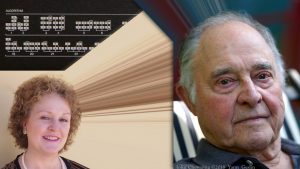John Chowning (Stanford University, Professor Emeritus) was born in Salem, New Jersey in 1934. Following military service and four years at Wittenberg University, he studied composition in Paris with Nadia Boulanger. He received the doctorate in composition (DMA) from Stanford University in 1966, where he studied with Leland Smith. In 1964, with the help of Max Mathews of Bell Telephone Laboratories and David Poole of Stanford University, he set up a computer music program using the computer system of Stanford’s Artificial Intelligence Laboratory. Beginning the same year he began the research that led to the first generalized surround sound localization algorithm. Chowning discovered the frequency modulation synthesis (FM) algorithm in 1967. This breakthrough in the synthesis of timbres allowed a very simple yet elegant way of creating and controlling time-varying spectra. Inspired by the perceptual research of Jean-Claude Risset, he worked toward turning this discovery into a system of musical importance, using it extensively in his compositions. In 1973 Stanford University licensed the FM synthesis patent to Yamaha in Japan, leading to the most successful synthesis engine in the history of electronic musical instruments.
Chowning was elected to the American Academy of Arts and Sciences in 1988 and awarded the Honorary Doctor of Music by Wittenberg University in 1990. The French Ministre de la Culture awarded him the Diplôme d’Officier dans l’Ordre des Arts et Lettres in 1995. He was given the Doctorat Honoris Causa in 2002 by the Université de la Méditerranée, by Queen’s University in 2010, Hamburg University in 2016. and Laureate of the Giga-Hertz-Award in 2013. He taught computer-sound synthesis and composition at Stanford University’s Department of Music. In 1974, with John Grey, James (Andy) Moorer, Loren Rush and Leland Smith, he founded the Center for Computer Research in Music and Acoustics (CCRMA), which remains one of the leading centers for computer music and related research. [ccrma.stanford.edu]

